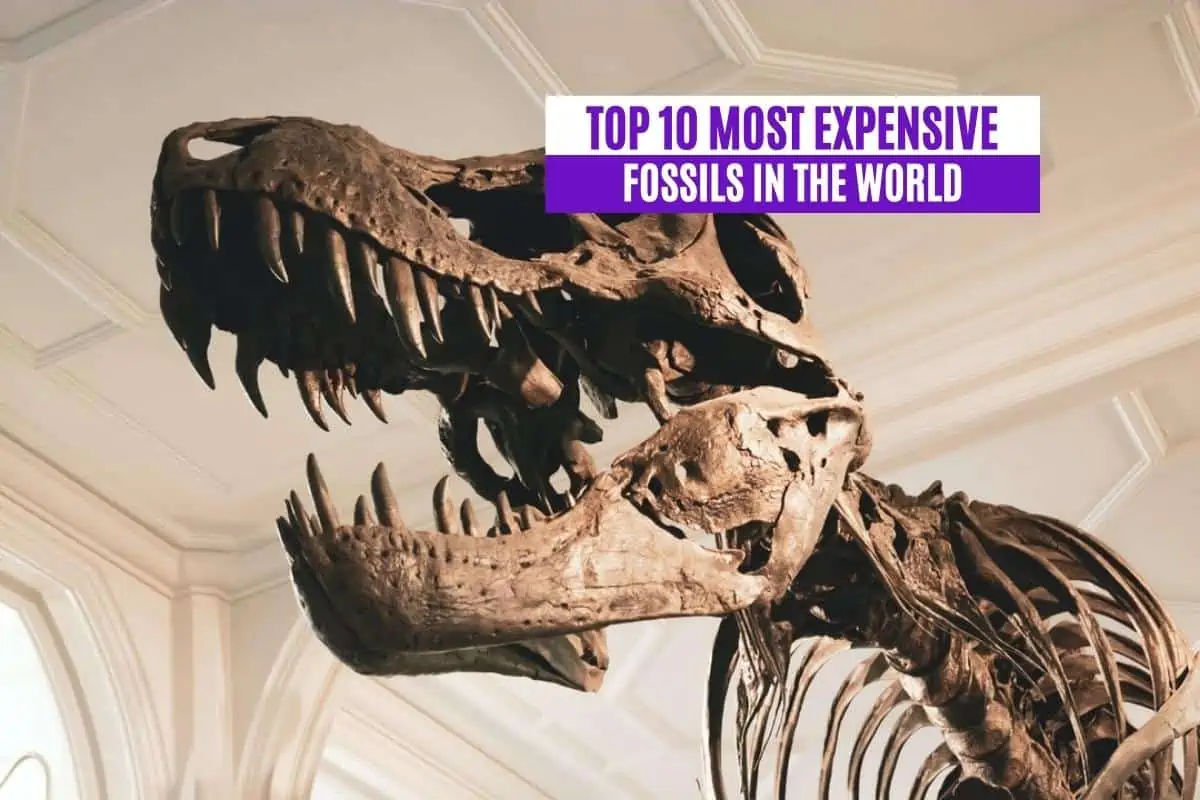Tiny fossils of ancient sea critters like trilobites typically only cost a few bucks. But if you’re considering decorating your living room with a T-Rex skeleton, you might want to think again. After all, these enormous fossils are some of the most expensive in the world!
The most expensive fossil is Stan the T-Rex, a 37-foot (11.3 meters) long Tyrannosaurus Rex skeleton that sold for $31.8 million at a Christie’s auction in 2020. This fossil is about 65% complete, but it’s in better condition than almost any other T-Rex fossil, making it uniquely valuable.
Whether you’re a dinophile, an amateur paleontologist, or someone curious about fossils, you’ll want to keep reading to discover the costliest fossils ever unearthed.
Here Are the Top 10 Most Expensive Fossils in the World:
- Stan the T-Rex – $31.8 million
- Hector the Deinonychus Antirrhopus – $12.4 million
- Sue the T-Rex – $8.3 million
- Big John the Triceratops – $7.7 million
- Dueling Dinosaurs – $6 million
- Gorgosaurus – $6 million
- Rare Allosaurus – $3.52 million
- The Fighting Pair – $2.75 million
- New Carnivorous Allosaurus – $2.3 million
- Complete Allosaurus – $1.8 million
10. Complete Allosaurus – $1.8 Million
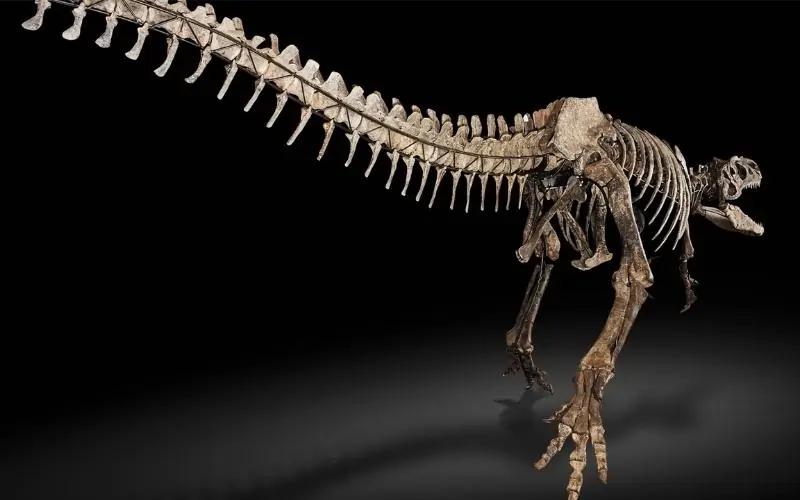
The Allosaurus might not be the most well-known dinosaur (the honor belongs to the T-Rex), but it’s undoubtedly one of the most expensive. After all, this fossilized Allosaurus skeleton sold for $1.8 million when it went to auction in 2010.
Originally discovered in the late 1800s, this specimen is one of the first (and most complete) Allosaurus skeletons ever discovered. As such, it’s a historically significant find unlike any other Allosaurus fossil on the planet.
Why It’s Expensive
This fossil is so valuable because it’s a historically significant specimen. Originally unearthed in 1877 by Othniel Charles Marsh, this might be the world’s first and most complete Allosaurus skeleton.
9. New Carnivorous Allosaurus – $2.3 Million
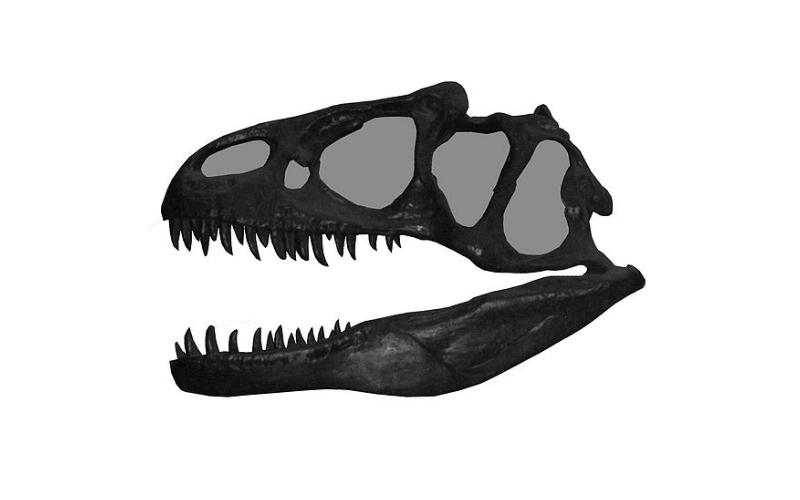
We’re still discovering new dinosaur species. This isn’t particularly surprising, as dinosaurs roamed the Earth for more than 160 million years. That’s more than 500 times longer than human beings have been around!
The discovery of this fossilized Allosaurus skeleton has helped paleontologists trace the lineage of the Allosaurus. It’s also set new records for fossil sales, fetching $2.3 million at auction in 2018.
Funnily enough, this fossil is more valuable than the world’s most expensive meteorites! Remember, an asteroid (a much larger type of meteor) is thought to have killed off the dinosaurs more than 60 million years ago.
Why It’s Expensive
This skeleton’s high value stems from the fact that it was a novel scientific and historical discovery. This fossil was the first of its kind, leading the way for paleontologists to learn more about different Allosaurus species.
8. The Fighting Pair – $2.75 Million
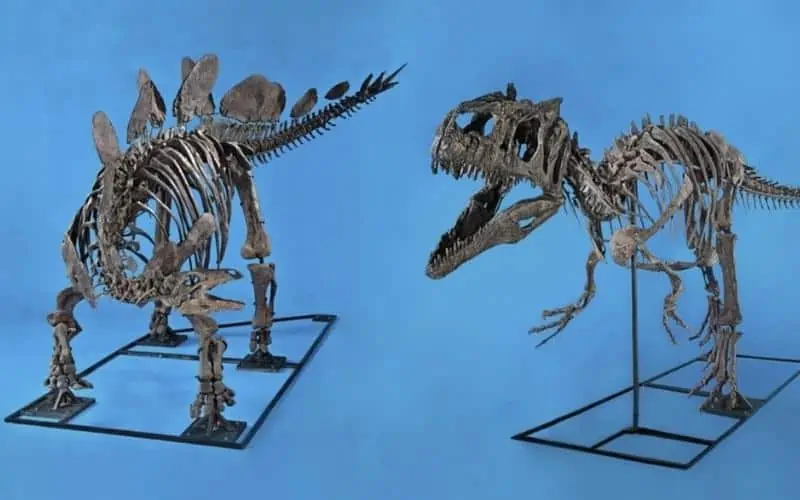
Considering the fact that this fossil consists of two dinosaur skeletons, the final auction price of $2.75 million seems a little low. However, these skeletons sold back in 2011, so prices would likely be higher today.
The Fighting Pair consists of an Allosaurus and a Stegosaurus, and their name comes from the fact the duo was discovered in a unique position. The Allosaurus jaw was wrapped around one of the Stegosaurus’ back legs, leading paleontologists to believe that the creatures were engaged in a fight before meeting their simultaneous doom.
Why It’s Expensive
Fossils that tell a story can be incredibly expensive. After all, they make a museum curator’s work far easier and tend to generate more public interest.
The fact that these two dinosaurs were likely fighting when they died makes them more valuable. Still, these fossilized dino skeletons aren’t the priciest duo ever sold.
But we’ll touch on that further down the list!
7. Rare Allosaurus – $3.52 Million
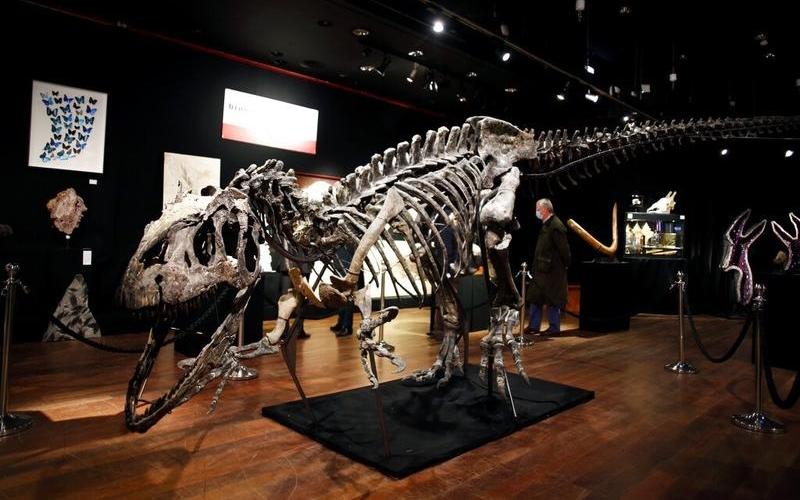
Several Allosaurus fossils have earned a spot on this ranking, but the most expensive Allosaurus fossil sold for $3.52 million in 2020. This dinosaur fossil was discovered in Wyoming, but it traded hands at an auction in Paris.
Notably, this rare fossil was almost complete. More than 70% of the exhibition-ready skeleton was real, which is unusual. Many fossilized dinosaur skeletons are primarily made of human-made resins, with few parts consisting of true fossilized bones.
Why It’s Expensive
This Allosaurus skeleton’s multi-million-dollar value stems from its completeness. Fossilized dinosaur skeletons are often missing significant portions, but this specimen was nearly complete, making it a rare discovery.
6. Gorgosaurus – $6 Million
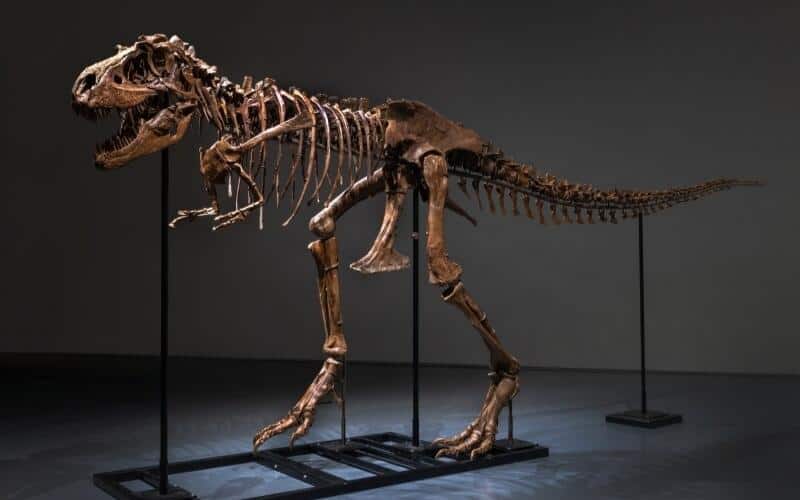
Though the Gorgosaurus might not be as well-known as the Tyrannosaurus Rex, it was similar in size and ferocity. This nine-foot-tall Gorgosaurus fossil sold for $6 million in 2022, making it more valuable than the most’s expensive bonsai trees, some of which are purported to be thousands of years old.
The buyer of this massive skeleton remains unknown, which has generated concern from the scientific community. After all, rare fossils are irreplaceable scientific resources that can help us understand Earth’s natural history.
Why It’s Expensive
The Gorgosaurus fossil that sold for millions in 2022 is one of less than two dozen similar finds, making it a rare specimen. This rarity is the primary reason this skeleton managed to sell for such a high price.
5. Dueling Dinosaurs – $6 Million
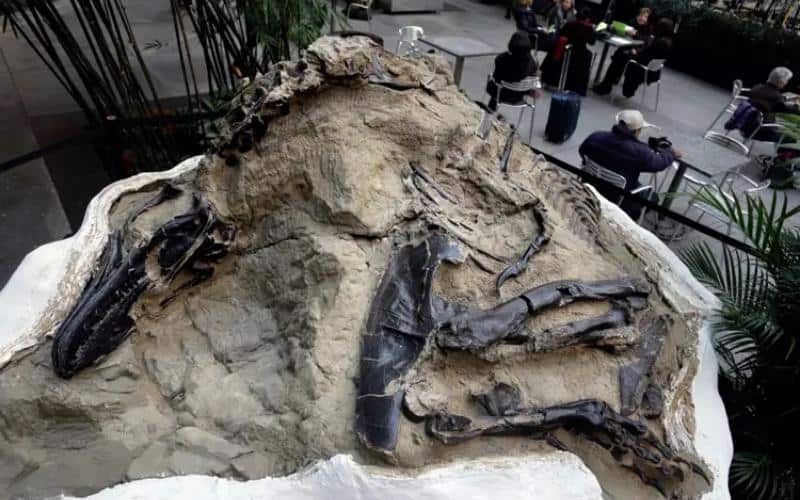
Like The Fighting Pair, the Dueling Dinosaurs consist of two distinct dinosaur skeletons. However, this fossil contains two of the most beloved types of dinosaurs—a T-Rex and a Triceratops.
Friends of the North Carolina Museum of Natural Sciences purchased these fossilized creatures for $6 million in 2020, and the skeletons arrived in a huge chunk of plaster-covered rock.
As paleontologists slowly excavate these skeletons, there’s an excellent chance they’ll discover signs that the two dinosaurs were engaged in a life-or-death battle before finally meeting a bitter end together.
Why It’s Expensive
This fossil is expensive because it’s made of two distinct dinosaur skeletons. Even better, these skeletons belonged to two of the most popular types of dinosaurs, ensuring that the exhibits made from them will draw public interest.
4. Big John the Triceratops – $7.7 Million
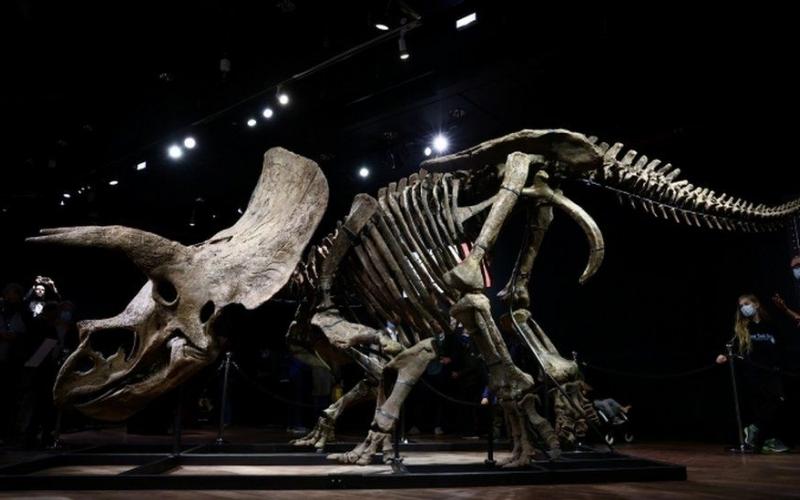
The bigger the fossil, the higher the payout! This concept undoubtedly applies to Big John, the largest Triceratops fossil ever discovered. Unearthed in 2014, this skeleton was notable for its massive skull, which was more than 5ft (1.5m) long.
When this fossil went to auction in 2021, it sold for $7.7 million to an anonymous American buyer. While this was certainly disappointing for museum directors and paleontologists, we can only hope that this enormous dinosaur fossil is enjoying its best afterlife in a mansion somewhere.
Why It’s Expensive
Though Triceratops are well-known for their large, three-horned skulls, Big John is remarkably larger than any other Triceratops skeleton ever discovered. This unusual size makes it an attractive acquisition for museums and private collectors alike.
3. Sue the T-Rex – $8.3 Million
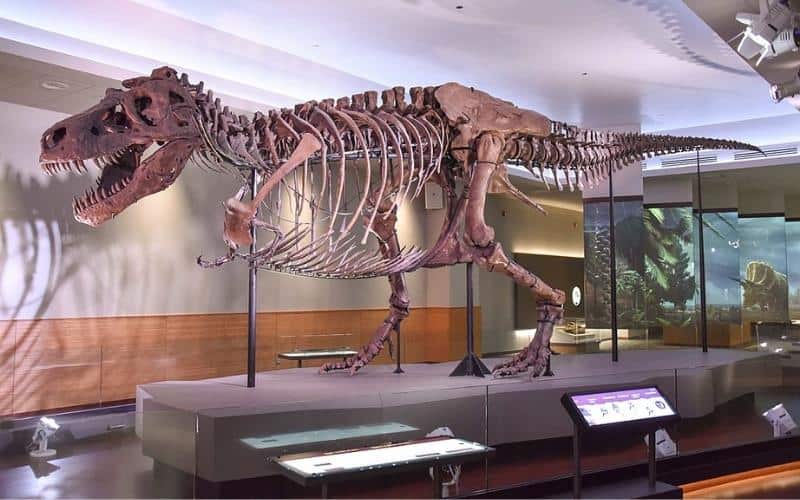
While some fossils have ended up in the hands of unknown private buyers, the most complete Tyrannosaurus Rex fossil ever discovered is undoubtedly in good hands. Nicknamed Sue, this fossil was purchased in 1997 by the Field Museum of Natural History in Chicago.
Before the auction began, the museum had launched a campaign to request enough funds to compete against private buyers. Fortunately, a combination of corporate and private donations ensured that curators could secure the fossilized skeleton. The final price was a staggering $8.3 million!
Why It’s Expensive
Sue the T-Rex comprises 250 bones, making it approximately 90% complete. This completeness is virtually unheard of within the paleontological field, ensuring that Sue is a one-of-a-kind discovery worth millions.
2. Hector the Deinonychus Antirrhopus – $12.4 Million
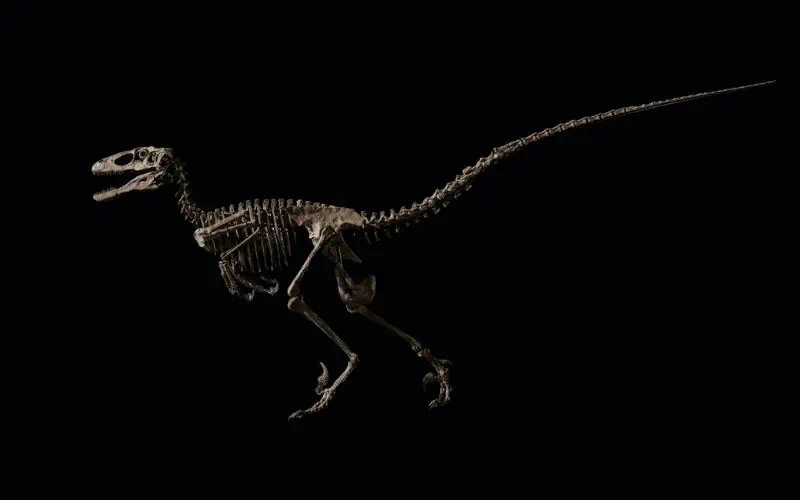
This dinosaur fossil’s scientific name (Deinonychus antirrhopus) is a mouthful, which is why most people simply refer to it as Hector. A potential ancestor to the infamous velociraptor, this dinosaur was a predatory, carnivorous creature with a long tail and curved, claw-like arms.
Hector, one of the most complete examples of this dinosaur ever found, sold for $12.4 million at a Christie’s auction in 2022. Before selling, it was displayed at the Natural History Museum of Denmark.
Why It’s Expensive
This fossil’s incredible value stems from the fact that it’s one of the few (and most complete) Deinonychus antirrhopus skeletons ever discovered.
1. Stan the T-Rex – $31.8 Million
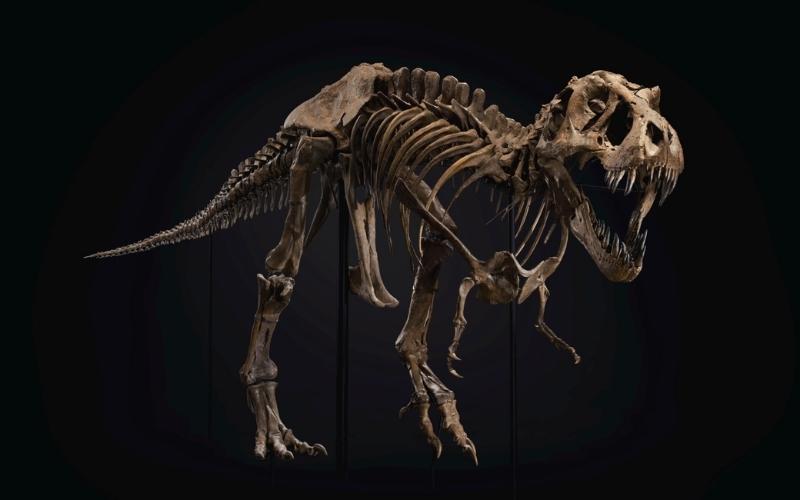
The most expensive fossil in the world is Stan the T-Rex, a Tyrannosaurus Rex skeleton that sold for $31.8 million in 2020. This incredible specimen’s value is more than twice that of the second-most expensive fossil, Hector.
While Stan isn’t the most complete T-Rex fossil ever discovered, its excellent condition is virtually unheard of within the paleontological community.
Comprised of 188 individual bones, this T-Rex has puncture marks on its jaw (likely from an attack) and healed signs of trauma along its spine. Though initially discovered in 1987, this skeleton has remained in excellent condition over the last several decades thanks to consistent preservation techniques.
Why It’s Expensive
There are several reasons why Stan the T-Rex is the most expensive fossil in the world.
Firstly, this is a T-Rex fossil. Paleontologists have only discovered a few dozen adult T-Rex skeletons. However, the Tyrannosaurus Rex is the most well-known dinosaur in the world.
In short, demand for T-Rex fossils is high, but supply remains low. Still, rarity isn’t the only reason this fossil sold for millions.
Stan the T-Rex consists of fossilized bones (188 to be precise), differentiating it from fossils formed by mineralization. These bones tell a story, showing signs of fights with other creatures and healed injuries.
These qualities make Stan a dream come true for museum curators and paleontologists eager to study dinosaur DNA, naturally boosting the fossil’s value.
What Factors Impact a Fossil’s Value?
High-quality fossils are relatively easy to replicate but impossible to replace. As such, many of the priciest fossils are worth millions!
But some fossils are only worth a few dollars, which may make you wonder, “Why are some fossils so expensive?”
Well, the value of a fossil often depends on its:
- Size
- Completeness
- Rarity
- Public interest
Exploring how these factors influence a fossil’s value will help you understand why some fossils, like Stan the T-Rex, are worth so much.
Size
Many of the world’s most expensive fossils are massive.
Your average trilobite fossil might only cost about $5 (sometimes less), but it’s only about an inch long. On the other hand, a complete Tyrannosaurus Rex fossil can stand 12ft (about 3.7m) tall and be 40ft (12m) long.
You’d need to line up more than 600 one-inch trilobites to equal the size of one of these fossils, and they still wouldn’t account for the width of each bone!
Fossils of gigantic creatures tend to be more valuable than fossils of tiny creatures for two reasons:
- They’re more spectacular, and
- They’re rare
Museum curators adore large fossils because they can draw equally large crowds of spectators. After all, being able to look up in wonder at a gigantic prehistoric skeleton is bound to be more memorable than staring at a palm-sized rock with a tiny creature embedded inside.
Additionally, large fossils are comparatively rare.
The process of fossilization is complex, and sometimes skeletons don’t fossilize completely, resulting in “missing” bones and segments. For this reason, complete fossils are almost always more valuable than incomplete ones.
Completeness
A plant or animal can only become a fossil under the right conditions. Generally, fossils are formed when dead organisms are buried by thick layers of sediment (dirt and sand). But when an organism is only partially covered, the exposed part will decay naturally, resulting in an incomplete fossil.
Because fossilization only occurs under precise conditions, complete fossilization is a rare phenomenon.
Consequently, complete (or nearly so) fossils tend to be far more valuable than smaller, partially-complete ones. After all, the more rare something is, the more valuable it can become.
Rarity
Like the world’s most expensive elements, some fossils are valuable because they’re rare.
Some are exceptionally rare due to their completeness, but others are rare because they portray specific events or activities. For example, the Dueling Dinosaurs fossil is valuable because it consists of a T-Rex and a Triceratops skeleton.
These creatures may have perished while engaged in a fight to the death, adding a sense of intrigue to their strange positioning. Because there’s a unique story behind this fossil’s creation, it’s sure to generate public interest, another factor influencing fossil values.
Public Interest
Dinosaurs have fascinated people since the Ancient Greeks started uncovering their massive bones. Hundreds of movies, television shows, and documentaries have been made about dinosaurs, helping fuel public interest in dinosaur fossils.
These long-gone creatures (and their fossils) generate tons of interest from the general public due to their enigmatic nature. After all, no human has ever seen a live dinosaur, as these creatures went extinct millions of years ago.
And yet their remains litter the planet, giving us proof of their existence. People cannot help but let their imaginations run wild when looking at dinosaur fossils, imagining what these fantastic animals once looked like, how they sounded, and what it would be like to see on alive today.
Because people are continually drawn to the mysterious nature of dinosaur fossils, they’re always an in-demand commodity. Museums housing impressive fossils can attract large crowds year-round, making those fossils extremely valuable to the museum.
In short, the more interesting a fossil is to the general public, the more valuable it’s bound to become.
Why Do Some Fossils Have Names?
Many of the world’s priciest and most well-known fossils have names, just like people! The reasoning behind this is pretty straightforward—pronouncing and remembering the names of specific fossils can be challenging, even for paleontologists.
Giving a fossil a simple name (like Sue, Hector, and Stan) makes it easier for museum curators, paleontologists, and the general public to talk about that fossil. Can you imagine how tricky it would be to discuss Stan the T-Rex if we only referred to it by its inventory designation, BHI 3033?
What’s the Most Expensive Fossil in the World?
The most expensive fossil in the world is Stan the T-Rex, a massive Tyrannosaurus Rex fossil that sold for $31.8 million in 2020. This fossil was able to fetch such a high price because of its condition, completeness, and rarity.
Fewer than 40 adult T-Rex fossils have been unearthed, making this specimen a paleontologist’s dream come true. The skeleton also tells a story about the living creature, as the bones are marked with signs of wounds and healed traumas.
Would you like to learn more about the world’s most expensive creatures and plants? If so, check out these related articles!

